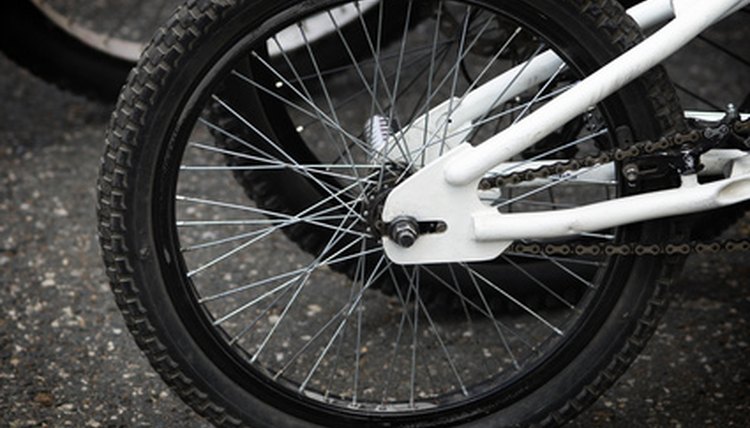How to Replace Rear Wheel Bearings on a BMX

The bearings inside a rear BMX wheel enable the hub (the center of the wheel) to spin smoothly over the axle. Bearings are small metal or ceramic balls that are packed in grease inside the hub. Over time these bearings can wear out, particularly on BMX bikes, which are often used for jumping and other maneuvers that can place extra stress upon the wheels. Worn bearings will sometimes make a clicking or grinding noise when the wheel rotates.
Disassembly
Remove the rear cog from the wheel (the wheel will need to be off the bike). For cog removal, insert a proper-size freewheel removal tool through the center of the cog. Holding the cog in place with the chain portion of a chain whip, use an adjustable wrench to turn the removal tool counterclockwise. This will free the cog.
Place the wheel over a light-colored towel or rag to catch any small parts that might fall during the following procedures.
Place a 15mm cone wrench onto the left-side, or non-drive-side, axle cone of the wheel and turn the accompanying locknut counterclockwise with a proper-size wrench. The locknut will be located practically at the tip of the axle. The cone will be directly beside it.
Unthread the loosened locknut and cone, and slide the axle from the other end of the wheel.
Remove the bearings (which will be exposed by the removal of the axle) from both sides of the wheel. Be sure and count how many bearing balls you remove from each side. The exact same number must go back in.
Clean the axle of old grease and grime. An old shop towel will work fine.
Replacement
Apply a layer of grease inside each bearing race. This is the "shelf" just inside the hub on which the bearings sit.
Insert your bearings into each bearing race. Your new bearings will need to be the same size (and number) as your old bearings.
Cover the new bearings with a second layer of grease. Apply further grease to the axle, coating it generously.
Slide the axle back through the right side (the drive side) of the wheel. Do this carefully so you don’t disrupt the bearings.
Thread the left side cone and locknut (in this order) back onto the end of the axle. Use only your fingers for this process.
Place the cone wrench onto the cone and your other wrench onto the locknut. Turn the locknut clockwise against the cone to tighten.
Check the adjustment. The wheel should spin freely, without binding. If the wheel binds, loosen the locknut. If there is side-to-side play in the hub, continue tightening the locknut.
Fit your cog back onto the freewheel. Tighten the cog in place by first inserting the freewheel removal tool once again into the center of the cog, then turning the free-hub tool clockwise with the adjustable wrench.
